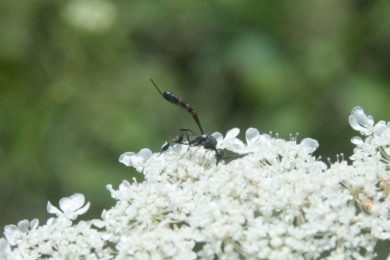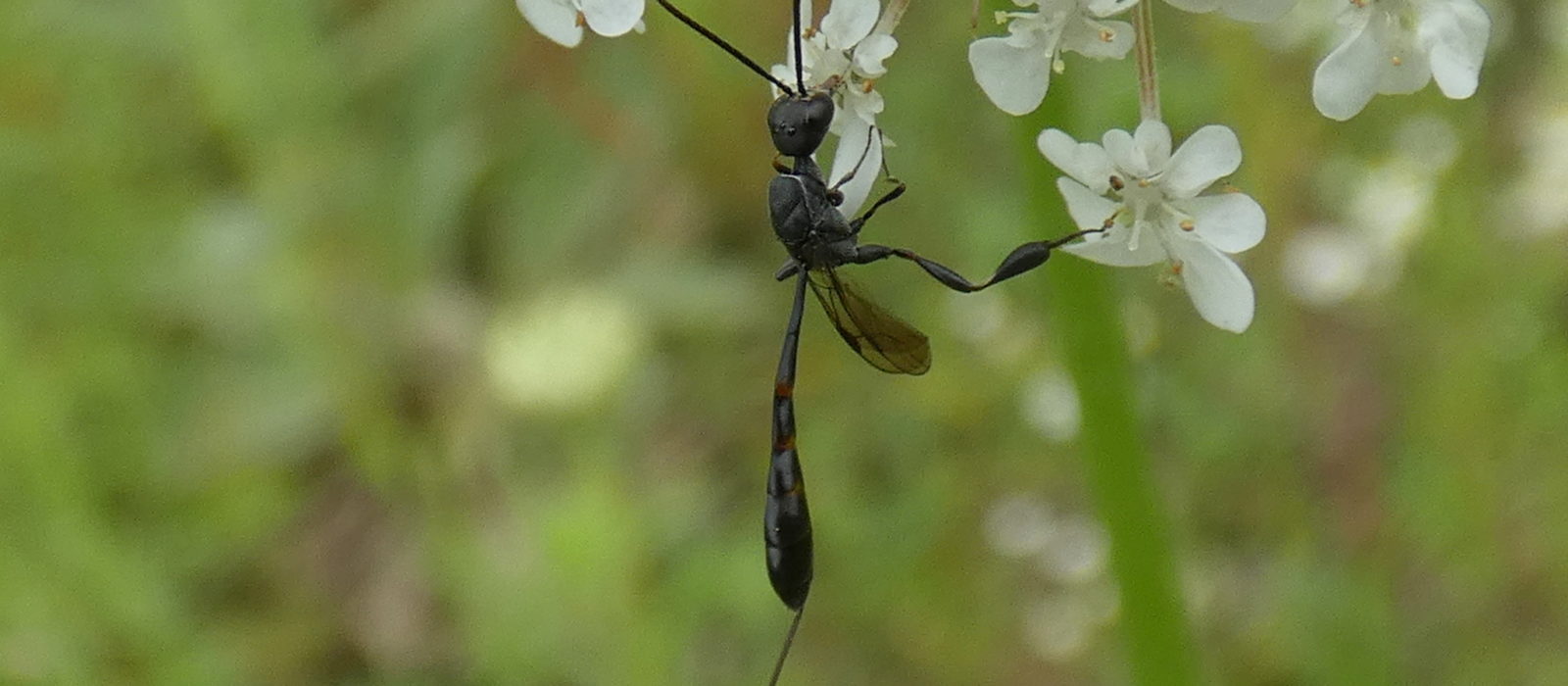An August 4th, 2022, iNaturalist observation by Parker Fyfe Kiernan added an interesting wasp to the Martha’s Vineyard Atlas of Life: a “carrot wasp” in the genus Gasteruption. We’re unable to identify this peculiar wasp to species – this is a difficult genus. But the genus itself is highly distinctive: Gasteruption wasps are slender with a distinct “neck” between the thorax and the head and dramatically enlarged segments on the hind legs. The abdomen attaches to the thorax high up on the wasp’s “back,” giving these wasps an odd overall shape. No one seems to have offered an explanation for these anatomical quirks. Females like the one Parker photographed also have long, slender spikes protruding from the ends of their abdomens. These are ovipositors – organs used for laying eggs.

Gasteruption sp., Chilmark, Mass., August 4, 2022. Photographed by Parker Fyfe Kiernan.
While Gasteruption seems to be common across the Northeast, the genus appears to be more scarce on the coastal plain. At present, iNaturalist only has one other observation from the Cape and Islands region: an example beautifully photographed in East Falmouth by Kai Squires on July 14, 2021. (One of Kai’s photos appears above as the banner image for this post.)
Gasteruption belongs to a small family, Gasteruptiidae, with only about 15 species representing it in North America, all in this genus. Gasteruptiidae, in turn, belongs to a large and diverse group of wasps sometimes known as “Parasitica,” which includes more than 30 families and many thousands of species. While the details vary from species to species, all the members of this group have larvae that feed on some life stage – egg, larva, pupa, or adult – of a host insect, generally killing the host. Some Gasteruption species break this rule, with their larvae feeding not on a host insect itself but on food that was stored for that host insect to eat during its own development. In particular, this wasp genus parasitizes other wasps or bees that nest in twigs. Adult Gasteruption feed on pollen from flowers, showing a particular fondness for members of the family Apiacaea – carrots, celery, and related plants – which accounts for the common name “carrot wasps.”
As is often the case with insects, it is difficult to assess the true abundance of Gasteruption in our region; these wasps are not especially conspicuous, and since few people pay close attention to wasps, the dearth of iNaturalist observations for this genus may say more about the limits of human attention than about the status of Gasteruption. But over time, as more observations make their way into our MV Atlas of Life project on iNaturalist, the picture for this and other infrequently reported organisms will gradually clarify.
Matt Pelikan is the director of the Martha’s Vineyard Atlas of Life project at BiodiversityWorks.
